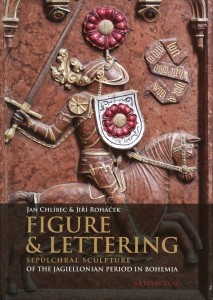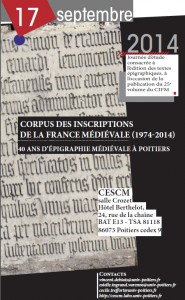Epigraphischer Workshop: „Epigrafia tra Sud e Nord: Influssi, paralleli e diversità nelle iscrizioni del tardo medioevo – Epigraphik zwischen Süd und Nord: Einflüsse, Parallelen und Unterschiede spätmittelalterlicher Inschriften“
Provisorisches Programm:
Mo., 28.11.2016
9:30-12 Uhr Exkursionen: Basilica di Santa Maria Gloriosa dei Frari, Archivio di Stato di Venezia (Flavia De Rubeis, Venedig u.a.)
Università Ca‘ Foscari, Dipartimento di Studi Umanistici, Palazzo Malcanton Marcorà, Sala Gaetano Cozzi:
14:00 Uhr Begrüßung (Paolo Eleuteri, Direktor des Dipartimento di Studi Umanistici)
14:15 Uhr L’epigrafia dei secoli XIII-XIV a Venezia (Flavia De Rubeis, Venedig)
15:00 Uhr La maiuscola gotica nell’Italia settentrionale: il caso di Padova (Nicoletta Giovè, Padua)
16:00 Uhr Kulturtransfer und humanistischer Habitus: Antikisierende Renaissance-Kapitalis bei den Wiener Humanisten um 1500 als antiquarisch-epigraphischer Code (Andreas Zajic, Wien)
Centro Tedesco di Studi Veneziani, Palazzo Barbarigo della Terrazza:
18:00 Uhr Öffentlicher Abendvortrag: Die Inschriften der deutschen „Nationalkirche“ S. Maria dell’Anima im Spannungsfeld zwischen nordalpinen und römischen Einflüssen (Eberhard J. Nikitsch, Mainz)
Di., 29.11.2016
Centro Tedesco di Studi Veneziani, Palazzo Barbarigo della Terrazza:
9:30 Uhr Druckschrift und Inschrift aus der Zeit des Frühdrucks: Nahtstellen und Berührungspunkte Augsburg und Venedig (Franz-Albrecht Bornschlegel, München)
10:00 Uhr Werkstattgespräch mit Studenten:
– Formular und Schrift Augsburger Grabdenkmäler vom Spätmittelalter bis zur Reformation (Roman Lachner, Maximilian Seibold, Frieder Leipold, alle München)
– La Gotica a Venezia (Desi Marangon, Venedig)
11:30 Uhr Spätmittelalterliche Inschriften im Dombereich von Brixen: Ein Panorama (Andreas Oberhofer, Bruneck)
12:30 Uhr Zusammenfassung: Herausforderungen für die epigraphische Arbeitspraxis zwischen Süd und Nord (Romedio Schmitz-Esser, Venedig)
16-18 Uhr Exkursionen: Basilica dei Santi Giovanni e Paolo, Campo Santi Giovanni e Paolo (Flavia De Rubeis, Venedig / Romedio Schmitz-Esser, Venedig).
Anmeldungen:
Flavia De Rubeis (Dipartimento di Studi Umanistici, Università Ca’Foscari, Venezia): flavia.derubeis@unive.it
Romedio Schmitz-Esser (Centro Tedesco di Studi Veneziani): r.schmitz-esser@dszv.it



